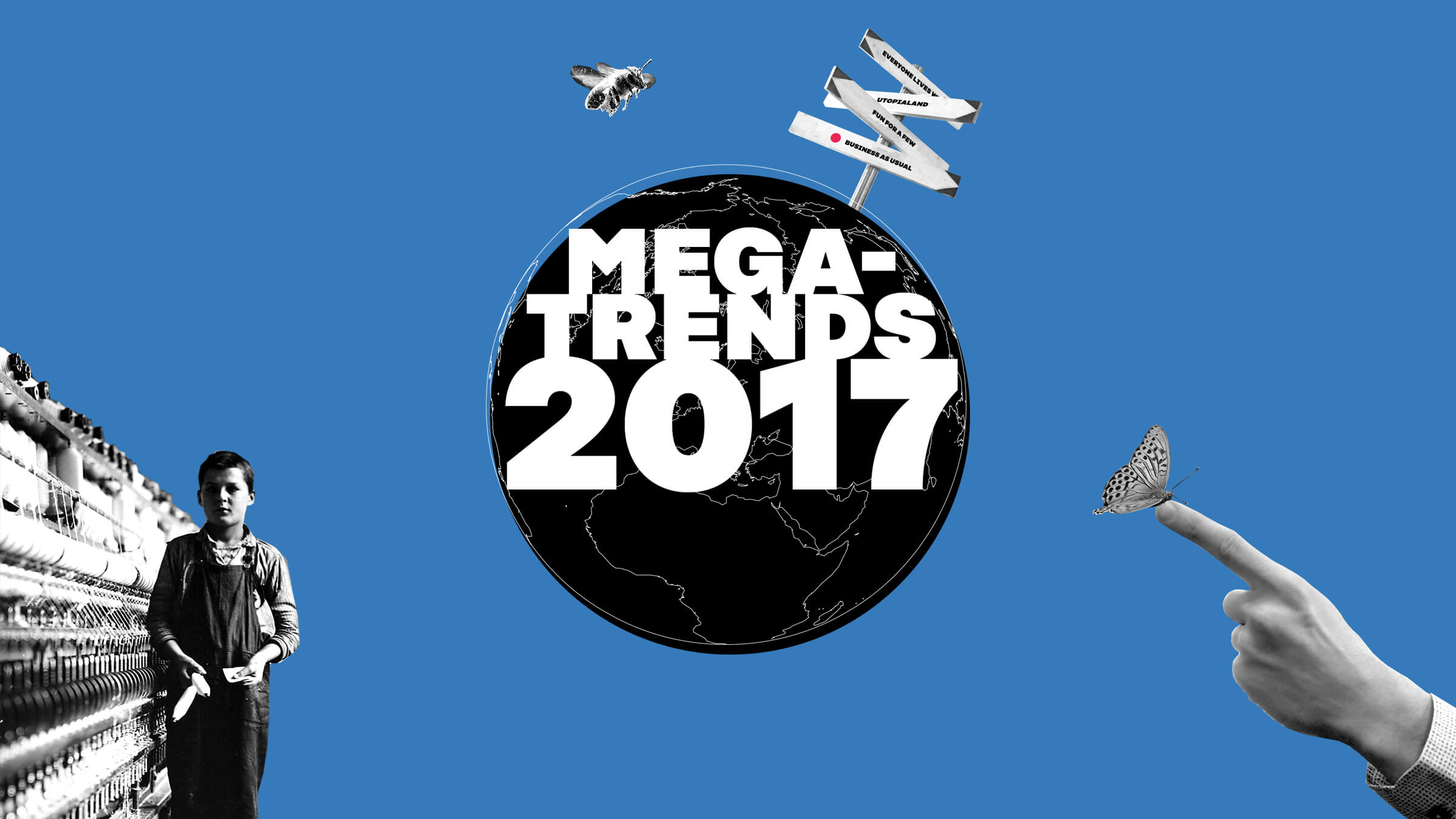This year’s Sitra Megatrends look at future developments in terms of three large trends:
In honour of Finland’s centenary in 2017, we want to highlight the megatrends affecting work, democracy and inclusion, and growth and progress that are relevant to the Nordic model. All of these are themes specifically at the core of the Nordic model’s future.
This year’s trend review diverges from those of previous years in that it offers two or more possible development trajectories for each trend.
As working life changes, it is possible that there will be plenty of work and enough paid work for everyone. Alternatively, it is also possible that there will be work for only a few, and even fewer will benefit from the work output. Democracy could flourish once again as open and interactive citizen participation utilising new technology. Or, in the gloomier scenario, power would concentrate in fewer and fewer hands and there would be escalating unrest. In the terms of the development of the economy, the most important thing is to consider what we are ultimately seeking – economic growth or wellbeing?
“Our future depends a lot on which direction we want to take. For this reason, we wanted this year to highlight different development trajectories,” explains Sitra’s Leading Foresight Specialist Elina Kiiski Kataja.
Why is foresight important?
“When considering the future, we need to be able to identify larger phenomena. This is why even slowly developing, large-scale trends must be kept in mind,” points out Sitra’s President Mikko Kosonen.
Megatrends illustrate large, long-term phenomena which change slowly, are often interlinked and are not transformed in an instant. Sitra’s megatrends highlight these phenomena and related paths and discussions on the future which are important for Finland.
“The objective of this work is to create a basis and a tool for conversation that promotes understanding of the visible changes in the world, especially from Finland’s perspective,” Kiiski Kataja adds.
Reviews of future developments since 2011
Sitra’s Trends List has been annually published since 2011. Over the years, we have produced slideshows, videos, card games, recommendations – all kinds of material – to support help us all anticipate our future. The latest Trends list has been viewed nearly 250,000 times so far. This year’s work on trends is connected with Sitra’s The Next Era vision project, which has produced abundant amounts of interesting foresight materials that relate to this year’s chosen trends.
Since change-related phenomena are genuinely complex and interdependent, differences of opinion on trend content are to be expected. In our list of trends, we are not trying to present chapter and verse on the issue but instead, based on long-term data analysis, our interpretation of the major development trends already affecting the future of the Finnish society. Sitra’s list of megatrends is not based on academic futures research; it is a compilation of various visions, foresight discussions and viewpoints presented in a layperson’s terms and in a usable format.
We hope that our megatrends analysis benefits and interests decision-makers, journalists, students, schoolchildren, or anyone else with an interest in the future. Sitra’s Trends List serves as an excellent tool and basis for discussion when assessing changes in the operating environment associated with activities such as strategy work. It is freely available to everyone.
In 2016, our megatrend list included a discussion of ecological sustainability, rapid technological advancement and the uncertain situation in global politics and interdependence. These are global megatrends which are still very topical. The 2016 trends can be viewed here.
Get to grips with the trend materials at www.sitra.fi/megatrends


















Recommended
Have some more.